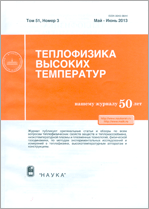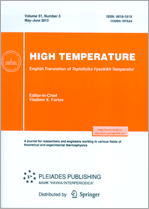|
This article is cited in 3 scientific papers (total in 3 papers)
Review
Recent problems of heat-transfer simulation in technological processes of selective laser melting and fusion
S. I. Zhavoronok, A. S. Kurbatov, L. N. Rabinskii, Yu. O. Solyaev
Moscow Aviation Institute (National Research University)
Abstract:
The thermal processes arising upon the implementation of the additive technologies of selective laser melting and the fusion of metals and alloys is analyzed. An adequate description of the heat transfer upon the implementation of additive technological processes associated with high-intensity local heating by a moving laser beam and the phase transitions generated by a semifinished powder product, crystallization, and the concomitant effects in the growing element is the key to gaining insight into the microstructure and the efficient properties of the obtained material and the prevention of residual deformation (shrinkage) of the item. Currently, the main causes of unpredictable production defects are deviations of the shape of the final item from the preset geometry and high-amplitude residual stresses, which can initiate destruction of the item under loads significantly lower than those calculated, as well as the occurrence of the microscopic defects (pores, layer interfaces, etc.) are. The development of mathematical models that, on the one hand, are sufficiently accurate to predict the listed phenomena and, on the other hand, allow practical implementation in engineering calculations is the basis for the further development of the laser-melting and fusion of metal materials. At the same time, analysis of the current state of the problem shows that development of efficient numerical methods providing acceptable computational costs while maintaining accuracy is the key element in the practical implementation of the models. A method based on multiscale, interconnected modeling of the mechanical and the thermal state of the growing body—at the local level in the melt pool domain, at the intermediate level in the vicinity of the melt pool and the adjacent layers, and at the level of the entire product as a whole—seems to be efficient; here, the computing process at the global level can be based on a combination of the finite-element method (indisputable in practice) and analytical calculations providing local refinement of the solution.
Received: 29.04.2019
Revised: 16.05.2019
Accepted: 16.05.2019
Citation:
S. I. Zhavoronok, A. S. Kurbatov, L. N. Rabinskii, Yu. O. Solyaev, “Recent problems of heat-transfer simulation in technological processes of selective laser melting and fusion”, TVT, 57:6 (2019), 919–952; High Temperature, 57:6 (2019), 916–943
Linking options:
https://www.mathnet.ru/eng/tvt11225 https://www.mathnet.ru/eng/tvt/v57/i6/p919
|


|





 Contact us:
Contact us: Terms of Use
Terms of Use
 Registration to the website
Registration to the website Logotypes
Logotypes








 Citation in format
Citation in format 
